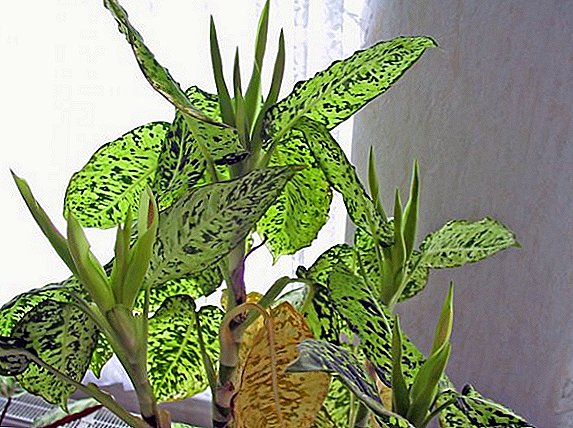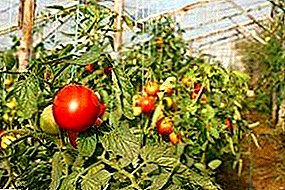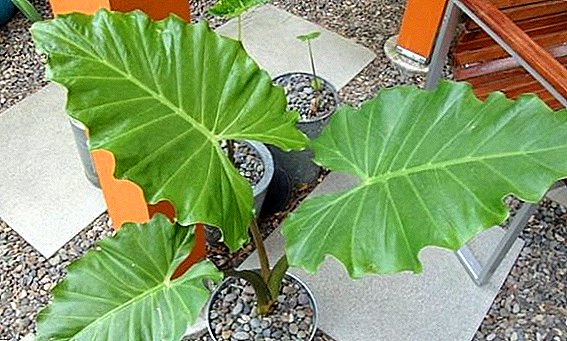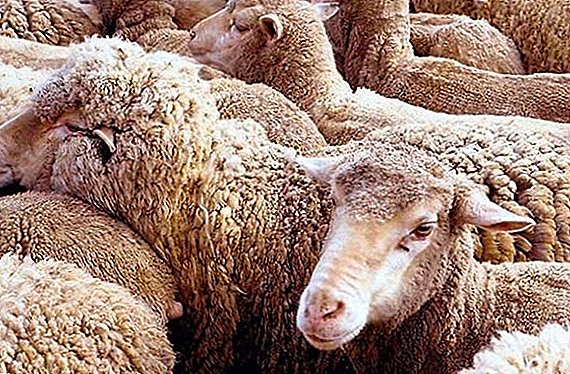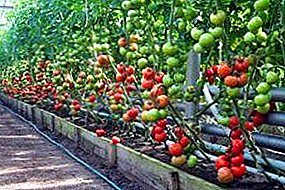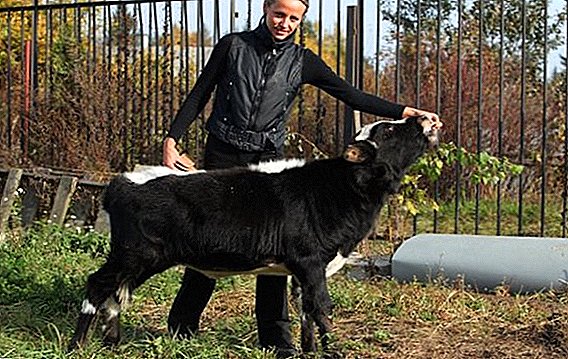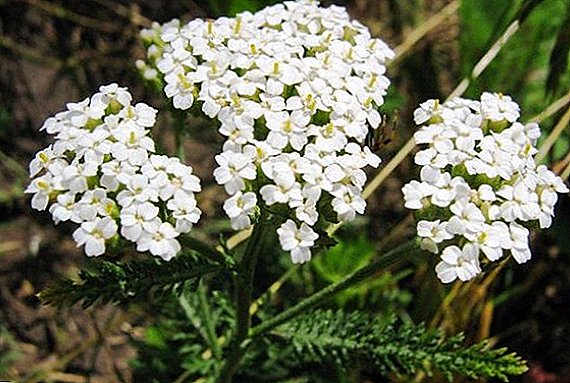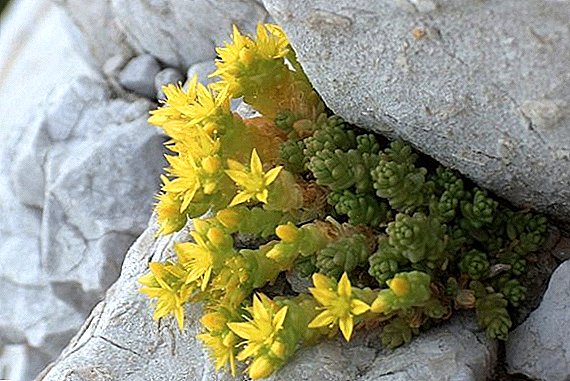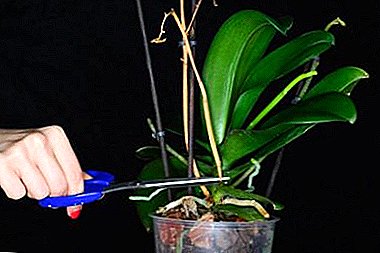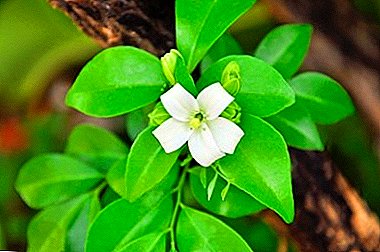
"Muraya" is an evergreen plant of the family of ruta genera from China, a close relative of citrus. It received its name in honor of the Swedish botanist Juhan Andreas Murray.
"Murayi" (Murray) are widely distributed in Southeast Asia, Australia and the Pacific Islands.
General description of the plant
As an ornamental plant the most popular is “Muraya Paniculata” (Murraya Paniculata), also known as fragrant, "Exotic" or "Orange Jasmine".
In nature, it grows up to 3 meters in height.but the room is often grown as bonsai. It is a fast-growing shrub with dark green, feathery leaves of 3-9 leaves and white flowers.
Pounded sheet of "Murayi" emits a citrus scent. Flowers are formed at the tips of branches and gathered in inflorescences. All five petals beautifully bent back.
 In place of the flower an elongated berry is formed.which, as it ripens, acquires a bright red color.
In place of the flower an elongated berry is formed.which, as it ripens, acquires a bright red color.
The berries have tonic properties, relieve fatigue and lower blood pressure, which is similar in action to the Chinese Schizandra.
A decoction of the leaves is used for gargling for bacterial infections.
"Muraya Paniculata" is undemanding in the care and very decorative. In the room it blooms almost all year round, white flowers contrast beautifully with dark foliage and red berries. Not the last role in the popularity of the plant is its bright jasmine flavor.
The video provides a general description of the Murai (Murraya) Paniculate plant:
The most common types
 Many types of "Murayi", and there are a little more than ten, attract the attention of scientists.
Many types of "Murayi", and there are a little more than ten, attract the attention of scientists.
For example, Muraya four-part, which is widely used in Chinese medicine for the treatment of cough, rheumatism, and stomach ailments.
Recent studies have shown that the active substances of this plant can affect cancer cells and prevent their reproduction.
"Dwarf"
"Dwarf Muraya (Murraya)" is a miniature form of "Paniculata." It is assumed that such a "Mini-Muraya" was the result of a mutation. It differs tiny leaves, collected by 3-5 in a complex leaf. The trunk is bent a little from the first weeks of life of the plant, it is strongly branched. The height of an adult bush does not exceed 50 cm.
Very attractive for florists feature dwarf form - previously flowering. Even very young bushes with a height of just over 5 cm are sold with buds, flowers or fruits.
Attention! If you want to buy a dwarf "Murayu", but it has no signs of flowering - it is better to contact another seller.
Most likely, under the guise of a rare dwarf form you are trying to sell another plant.
Smart Choice
Non-fruiting variety of "Paniculi Murai"bred by Australian breeders. Used to create hedges and other forms of street gardening. At home, not divorced.
"Min-a-min"
 “Min-a-min” is a compact form of “Smart Choice”.
“Min-a-min” is a compact form of “Smart Choice”.
Like the older sister, she is sterile, that is, does not form seeds during flowering.
The size is noticeably larger than the dwarf one (in the open field it can grow above a meter) and looks different.
Its complex leaf is larger and consists of 5-7 small leaves.internodes longer. Authorship of this form of "Muray" belongs to Australian Trevor Garrad. Along with the “Dwarf Muraya”, min-a-min is very popular for growing at home.
"Muraya Koenig" (Royal, Black-fruited)
“Muraya Koenig” is not a type of “Paniculata”, but a separate species originating from India. In nature, such a “Muraya” grows into a tree up to 6 meters high, the trunk diameter reaches 40 cm. The feathery sheet is composed of 11-21 small leaves 2-4 cm long. Inflorescences are large, with up to 80 flowers. The tree blooms for 2-4 years.
Both the leaves and the white flowers of the royal “Murayi” emit a strong aroma. After flowering, shiny black berries are formed, each containing one seed. The pulp of the berries is edible, but the seeds themselves are poisonous to humans. In India and Sri Lanka, Murayi Koenig leaves are used to make Curry.
"Dutch Muraya (Murray)"
 Often, sites selling flowers offer a kind of “Dutch Murayu”, posing as a special type or new variety.
Often, sites selling flowers offer a kind of “Dutch Murayu”, posing as a special type or new variety.
However, you will not find such a species in any catalog of plants.
In fact, this is the usual "Pancake Muraya", brought from Holland. It may look very attractive, thanks to the lacy foliage, but young specimens are of little interest to gardeners, because they bloom only for 5-8 years of life. Sell such "Murayu" is usually for several seedlings in one pot.
Sometimes planted Dutch plants try to pass off as a dwarf form.. You can distinguish them by the number of leaves in the group, the Dutch have from 7 to 11, and an even trunk without branching. “Dwarf Muraya” immediately resembles a small tree, and the Dutch one has a conical shape due to the significant difference in length between older and younger leaves.
Interesting! Just one flower "Murayi" is enough to fill the whole room with aroma.
Also, the reader can read about plant care. More information about caring for Murray at home can be found in this material.
The invigorating smell improves mood and improves sleep. Chewing a piece of "Murayi" can get rid of headaches and sores in the mouth. This amazing plant can become not only an ornament of a window sill, but also the real green first-aid kit.


